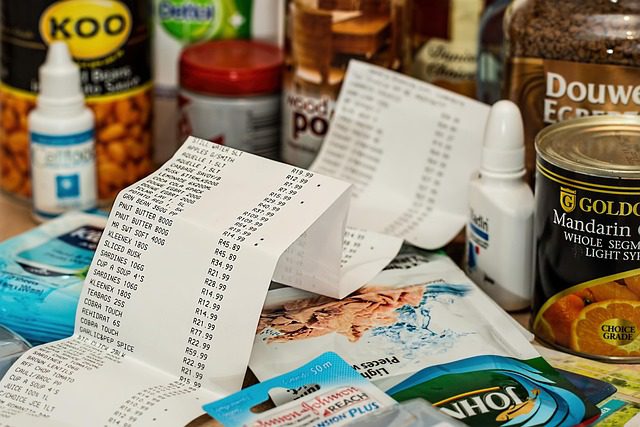In today’s digital economy, finding ways to earn extra income can be both exciting and profitable. One popular method is flipping items on Facebook Marketplace, which involves buying low-cost items and reselling them at a higher price. For those unfamiliar with the term, flipping refers to the practice of purchasing items with the intent to sell them for a profit, capitalizing on price disparities in the market.
Facebook Marketplace has revolutionized the way people buy and sell goods. With millions of users, it offers a vast selection of items ranging from furniture and electronics to clothing and collectibles. This platform allows individuals to easily post items they no longer need, often at bargain prices, providing savvy buyers with the opportunity to find undervalued products that can be resold for much more.
With just an initial investment of $100, you can begin your flipping journey. The secret lies in understanding how to identify items that can be acquired cheaply and sold at a profit. In essence, flipping involves research, negotiation skills, and a keen eye for value. Whether you’re cleaning out your garage or searching for deals locally, the potential for profit can be substantial.
This guide will delve into the essentials of flipping items on Facebook Marketplace and help you understand the nuances of this side hustle. From identifying profitable items to effective strategies for negotiation and marketing your products, we’ll touch on everything you need to know to turn that initial $100 investment into $1,000 and beyond.
Why Facebook Marketplace is Great for Flipping
Facebook Marketplace has become a go-to platform for individuals looking to buy and sell locally. With a user-friendly interface and millions of active users, it cultivates a thriving community for reselling items. One major reason why it’s great for flipping is the low barrier to entry. Anyone with a Facebook account can start listing items for sale—no special knowledge, skills, or costly upfront investments needed.
The vast array of goods available also makes it easy to find undervalued items that can be bought and resold for a profit. From furniture and home decor to electronics and collectibles, opportunities exist across various categories. By tapping into local listings, you can often find items that are priced significantly lower than their market value, especially if the seller is eager to sell quickly.
Moreover, flipping on Facebook Marketplace encourages community interactions. Sellers frequently respond to messages quickly and are often more approachable compared to anonymous online platforms. This personal touch can lead to favorable negotiations and deals, making the buying and selling experience substantially more engaging than using other platforms.
Additionally, Facebook’s algorithm promotes local sales, which not only helps sellers reach a targeted audience but also makes it convenient for buyers to arrange quick pickups. This local focus lowers shipping costs and allows customers to inspect items physically before purchasing. If you’re looking to make profits quickly, the opportunity to sell items directly to interested local buyers accelerates the flipping process.
In comparison to traditional thrift stores or garage sales, flipping on Facebook Marketplace can yield higher returns. Many sellers undervalue their items simply because they want a quick sale. Savvy flippers can recognize these opportunities and negotiate deals that allow for greater profit margins.
- Facebook Marketplace – The platform itself facilitates easy buying and selling within your local community.
- thredUP – An online consignment store where you can buy second-hand clothes, perfect for reselling stylish items.
- Amazon – Browse Amazon for deals on new items, many of which can be flipped at a higher price on Facebook Marketplace.
- Craigslist – A great source for finding undervalued items in your area that you can flip for a profit.
What to Buy and Sell for Maximum Profit
Knowing what to buy and sell on Facebook Marketplace can significantly enhance your chances of maximizing your profits. Certain categories tend to perform better than others in the resale market. Therefore, you should focus your efforts on items that boast both popularity and demand. Researching current trends, seasonal shifts, and enduring favorites will provide valuable insights into what items yield the best margins.
Furniture remains a hot commodity on the platform. Many people look for affordable options for home decor, and well-maintained or unique pieces can fetch high prices. Items like antique chairs, mid-century modern tables, and stylish shelving units usually find eager buyers. Always examine the condition of the furniture closely; fresh paint or minor repairs can dramatically increase its resale value.
Electronics also offer great potential for flipping. Newer gadgets like smartphones, tablets, and gaming consoles maintain a strong demand as individuals seek either upgrades or cost-effective options. Keep an eye on brand new items as well as used ones. You can often score excellent deals on older models that still work perfectly and can be sold at a reasonable markup.
Appliances can frequently generate high returns, especially popular brands or specialty types such as espresso machines or high-efficiency washers and dryers. These items often have long lifespans, and many buyers prefer purchasing used models instead of new ones to save money. Look out for well-maintained appliances listed at attractive prices that have a robust resale market.
Collectibles present a unique niche that can be incredibly lucrative. Vintage toys, limited-edition items, or rare vinyl records tend to draw serious collectors willing to pay top dollar. Stay updated with trends in collectible markets to spot opportunities that others might overlook. Additionally, reputable websites like eBay can help you assess the current value of certain collectible items.
- Etsy – A great marketplace for handmade and vintage items, which can inspire ideas for flips.
- Mercari – Another selling platform that often has trending items that can be resold on Facebook Marketplace.
- Reverb – An excellent site for buying and selling musical instruments that can be flipped at a profit.
- Listia – A site for trading items, which can provide unique flipping opportunities.
How to Find Undervalued Items to Flip
Finding undervalued items can feel daunting, but it’s the key to successful flipping on Facebook Marketplace. Many sellers often underestimate the worth of their belongings or simply seek a quick sale, which creates a golden opportunity for buyers. To spot these hidden treasures, you must develop a keen eye and conduct thorough research, focusing on trends and the general market demand.
Start by regularly checking local listings and pay attention to items that appear frequently at lower prices. Familiarize yourself with the marketplace in your area; knowing what items typically sell for can inform your decisions. Additionally, look for listings that include keywords such as “moving sale,” “estate sale,” or “must sell.” These terms often indicate sellers who are eager to offload their items quickly, which could lead to better deals.
Consider attending garage sales, thrift stores, and flea markets, as these venues often harbor undervalued items waiting to be discovered. Arriving early gives you a first look at the offerings and increases the opportunities for snagging great deals. Don’t shy away from negotiating prices or buying in bulk, as this can open the door to even more profit potential when you resell the items.
Use tools like price comparison apps to help you assess the current market value of items. Websites such as eBay provide insights into the real-world prices items have sold for, guiding you to make informed purchasing decisions. This kind of due diligence will pay off in ensuring your flips yield maximum profit.
Networking with local buy-and-sell groups or forums can also be beneficial. Engaging with like-minded individuals who share tips and leads on good finds encourages collaboration and can lead you to undervalued gems. The more you connect, the more opportunities you’ll uncover in your flipping journey.
- Craigslist – A popular classifieds platform where you can find often undervalued items listed by local sellers.
- OfferUp – A mobile app that provides a user-friendly interface for buying and selling locally, with many deals waiting to be scored.
- Mercari – An online marketplace that hosts various items, giving you a chance to find undervalued goods.
- Game Kings – A reliable forum for gaming enthusiasts to trade items, often leading to good bargains on undervalued tech and games.
Negotiation Tactics to Get the Best Deals
Mastering negotiation tactics can significantly impact your success when flipping items on Facebook Marketplace. Being an effective negotiator not only helps you secure better prices but also fosters positive interactions with sellers. Approach negotiations with a friendly demeanor and confidence, as this establishes rapport and opens the door for discussion.
Start by doing your homework. Research similar items on the platform to gain insights into prevailing market prices. This allows you to make informed offers and strengthens your position during negotiations. Present your findings tactfully; for instance, if a seller lists an item at $100 while the average price sits closer to $75, mention this during your interaction.
Using psychological tactics can also be advantageous. For instance, expressing genuine interest in an item while emphasizing your budget constraints can entice sellers to negotiate. Phrasing your offer positively, such as “I really love this piece, but my budget is a bit tight at $60,” demonstrates respect for the seller’s asking price while opening the floor for dialogue.
An effective strategy involves starting with a lower initial offer, but be cautious not to undervalue the item excessively. Frame your initial offer with backing evidence, like comparable listings, to show it’s a reasonable bid. This approach not only encourages the seller to counter with a viable price but also positions you as a serious buyer who understands the market.
Be ready to walk away if negotiations hit a stalemate. Letting a seller know you’re considering other options can spur them into reconsidering your offer. Many sellers desire a quick sale, so making clear your willingness to leave can pressure them into negotiating more favorably.
- Negotiation Tactics from Nolo – Insightful article on negotiation strategies that can apply to any deal you pursue.
- Haggleville – A website offering tips and resources specifically for haggling over prices, especially in online marketplaces.
- VistaPrint Photography Tips – Useful guide on negotiating for photography-related items while providing general strategies applicable to other items as well.
- Forbes Effective Negotiation – Detailed exploration of negotiation strategies that can drive results in commercial transactions.
Cleaning, Fixing, and Presenting Items for Resale
Preparing items for resale on Facebook Marketplace involves more than just listing them; attention to detail in cleaning and presentation can significantly boost your profits. Potential buyers often judge items based on their appearance, so invest time in ensuring they look appealing. A clean and well-presented item not only attracts buyers but also conveys that you care about the quality of what you’re selling.
Start with a thorough cleaning of your items. For furniture, this might mean dusting, polishing, and using appropriate cleaners to remove stains. For clothing, washing, ironing, and ensuring no odors linger can make a substantial difference. Tools and products like microfiber cloths and gentle cleaning solutions can enhance the results without damaging the items. Consider using a steam cleaner for upholstery, which can effectively eliminate dirt and allergens.
In some cases, minor repairs can drastically increase an item’s resale value. If you find furniture with scratches or nicks, look into wood fillers or touch-up markers that can make imperfections nearly invisible. For electronics, ensure they function correctly and replace any missing parts. For example, replacing batteries in remote controls or cleaning connectors on game consoles can turn a hesitant buyer into a confident one, eager to close the deal.
Consider the presentation of your item too. Use natural lighting when photographing your products and choose uncluttered backgrounds for your listings. Presenting items in ideal settings, such as staging them in a home-like environment or against a neutral color backdrop, enhances visual appeal. If your item is a piece of art or decor, context contributes immensely to buyer interest—buyers can better envision how the item fits in their space.
Moreover, include honest descriptions in your listings that highlight the features and any upgrades made. Transparency builds trust, a vital component when selling online. Buyers appreciate knowing about any issues, as this prepares them for what to expect. High-resolution images, alongside clear and descriptive listings, create a comprehensive view of the item, increasing the chances of a quick sale.
- The American Cleaning Institute – A resource for cleaning products and techniques that can effectively prepare your items for sale.
- Wood Magazine – A detailed guide on fixing scratches on wood furniture, offering techniques to restore valuable pieces.
- The Spruce – Reviews of top furniture repair kits to assist in restoring your items before resale.
- Etsy Supplies – A marketplace for unique crafting and repair supplies that can enhance your items’ presentation.
Taking High-Quality Photos That Attract Buyers
High-quality photos play a pivotal role in selling items on Facebook Marketplace, as they provide potential buyers with their first impression of your products. Crisp, clear images can capture attention and idealize the quality of the items being sold. Consider investing in a good camera or use a smartphone with a high-quality camera to enhance your images. Natural light creates the best conditions, so try to photograph items near windows during daylight hours where possible.
When capturing images, avoid cluttered backgrounds that detract attention from the item. Use simple, neutral backdrops that allow the item to stand out. If you’re selling furniture, staging the piece in a well-decorated room can help buyers visualize it in their own space. Close-up shots are also crucial for highlighting specific details, such as textures, engravings, or any minor damages that need to be disclosed.
Consider including images taken from various angles to provide a comprehensive view of the item. Show the front, sides, and any unique features that might be appealing to buyers. If possible, also highlight any functionality, such as opening the drawers of a desk or the reclining feature of a chair. The more information you provide through visuals, the less likely it is that prospective buyers will have questions later on.
Don’t underestimate the power of good lighting. Invest in a basic photography tripod to stabilize your camera or smartphone and reduce blurriness. Even inexpensive ring lights can improve the clarity and brightness of your photographs. If you’re selling electronics or collectibles, high-definition images can significantly boost desirability, making your items appear more polished and professional.
Finally, remember to edit your photos thoughtfully. Use editing software to enhance brightness, contrast, and saturation subtly, ensuring the images remain true to color. Avoid over-editing, as this can misrepresent your items and lead to buyer disappointment. Transparency in visuals builds trust and fosters positive interactions with potential customers.
- Canva – A user-friendly graphic design platform, ideal for creating appealing, professional images and collages for your listings.
- Pixlr – An online photo editing tool that allows you to enhance your images with filters and adjustments, perfect for quick edits before listing.
- Lighting.com – A resource for purchasing affordable lighting solutions, including ring lights and softboxes, to improve your photo quality.
- Adobe Lightroom – A powerful photo editing app that enhances your images, making them more appealing for resale.
Writing Listings That Sell Fast
Creating compelling listings is essential for catching the interest of potential buyers on Facebook Marketplace. The title of your listing should not only be clear but also enticing, accurately reflecting what you’re selling. Avoid generic headings and instead use descriptive phrases that highlight unique selling points. For example, instead of “Couch for Sale,” consider “Stylish Mid-Century Modern Couch – Like New Condition!” which evokes curiosity and addresses the item’s appeal.
In the description section, be detailed yet concise. Provide essential information such as size, color, brand, and condition of the item. Keep your tone friendly and engaging while ensuring you outline any flaws or issues upfront. Honesty builds trust, making buyers more willing to reach out or complete a transaction. Utilizing bullet points for key features can also enhance readability, allowing potential buyers to quickly assess the item’s value.
Integrate keywords into your listings that potential buyers might use to search for items. Consider using tools like Google Trends or the Facebook search bar to identify popular search terms. This strategic inclusion increases the visibility of your listing, potentially drawing in more viewers. Don’t shy away from describing how the item fits into buyers’ lives or how it solves particular problems.
Incorporate a sense of urgency by indicating if the item is priced to sell quickly or if it’s part of a limited-time offer. Phrases like “must sell this week” or “first come, first served” encourage prompt responses. Promoting your listing effectively can often lead to faster sales, giving buyers a solid reason to act quickly.
Finally, use high-quality photographs as a critical part of your listing. Good images can significantly enhance any written description. They serve not only as visuals but also as an advertisement that should complement your text, drawing buyers in with appealing aesthetics. Cross-promote your listing on social media for broader reach, as sharing on platforms like Instagram or Twitter can drive additional traffic to your Facebook Marketplace post.
- Thesaurus.com – Use this resource to find synonyms and enhance your listing title and descriptions, making them more engaging and varied.
- WordCounter – A tool to ensure your listing remains concise and within character limits, helping you keep your descriptions effective and engaging.
- Canva Facebook Post Templates – Find customizable templates to promote your listings visually on social media platforms.
- Bitly – A link-shortening tool making it easy to share your listings on social media without cluttering your posts.
Pricing Strategies to Maximize Profit and Sell Quickly
Setting the right price for your flipped items can make all the difference between a quick sale and a listing that lingers on Facebook Marketplace. Begin by researching similar items in your local market to understand the price range. Utilize this data to establish a competitive yet profitable price. Tools like eBay can offer insights into completed listings, showing what similar items sold for, helping you gauge a fair market value.
Consider the unique features and conditions of your items when determining a price. For example, if you own a vintage item in excellent condition, factor in any rarity or historical significance when setting your price. Remember, pricing too high may scare potential buyers away, while pricing too low can erode your profit margin. Aim for a sweet spot that reflects both the item’s value and market demand.
Creating bundles of items can also attract more buyers and allow for higher pricing. For instance, if you’re selling kitchenware, consider grouping pots, pans, and utensils together at a discounted rate compared to buying each separately. This strategy not only increases the perceived value but can also lead to quicker sales, as buyers appreciate the convenience of getting multiple items at once.
Another effective strategy involves using psychological pricing techniques. Pricing your item at $99.99 instead of $100 might seem trivial, but it influences buyer perception favorably. Furthermore, don’t hesitate to incorporate slight price adjustments depending on how quickly you want to sell. If an item hasn’t sold after a week, consider lowering the price slightly to attract attention from those who might have overlooked it initially.
Lastly, experiment with promotional pricing tactics, such as limited-time offers or “discount codes” for repeat buyers. Announcing a temporary price reduction may generate urgency, encouraging buyers to act quickly. Regularly analyze your listing performance and adapt your pricing strategy based on what works best in your particular market.
- PriceCharting – A tool that provides insights on video game prices, making it easier to price collectibles accurately.
- Amazon – Check similar items listed to get an idea of competitive pricing, especially for new and popular products.
- Facebook Marketplace Insights – Tools within the platform that allow you to track item views and adjust your pricing strategy effectively.
- Honey – A free tool for finding coupon codes and sales that can help you save money on necessary supplies for your listings.
Avoiding Scammers and Common Facebook Marketplace Pitfalls
Facebook Marketplace offers incredible opportunities for buying and selling, but it also attracts its share of scammers. It’s crucial to trust your instincts and be on the lookout for red flags. For example, if a seller insists on using unconventional payment methods or pushes you to complete the transaction off-platform, consider that a warning sign. Always aim to finalize transactions directly through Facebook’s payment system for added security and peace of mind.
When purchasing items, always inspect them thoroughly before proceeding with payment. If possible, meet in a public place where you feel safe and can adequately examine the item. Trustworthy sellers will understand your need to verify the product’s condition. If a seller refuses to meet up or becomes evasive when questioned about the item’s history, don’t hesitate to walk away from the deal.
Additionally, be wary of listings that seem too good to be true. Scammers often lure potential buyers with high-value items at significantly low prices. To further protect yourself, research the seller and check their profile. Look for reviews, mutual friends, and an adequate history of selling on the platform; a lack of this information can suggest suspicious activity.
Reporting suspicious sellers or listings helps keep the marketplace safe for all users. Familiarize yourself with Facebook’s reporting process to act quickly when you notice something off. Engaging in communities or groups specific to your local area can also offer valuable insights on recognized scams, where fellow users might have shared their experiences with dishonest transactions.
As a seller, protecting yourself from scams is equally important. Avoid shipping items without payment confirmation and be cautious of buyers who request shipping instead of local pickup. When dealing with larger items, always insist on cash payment during pickup; it minimizes the risks associated with potential chargebacks from dubious transactions. Clear communication about your policies can deter potential scams before they even begin.
- Scamwatch – A government website that educates users on various scams and offers tips to protect yourself online.
- Better Business Bureau – Check a business or seller’s reputation through consumer reviews and complaint history.
- FCC Consumer Help Center – A reliable resource for understanding your rights and how to report fraud and scams.
- Facebook Help Center – Find information on how to protect yourself and report suspicious activity on Facebook Marketplace.
Scaling from $100 to $1,000 and Beyond
Once you’ve developed a solid understanding of flipping items on Facebook Marketplace, it’s time to think about scaling your operation. Starting with just $100 may seem modest, but consistency, research, and a willingness to learn can transform that amount into a more substantial income. A crucial first step involves evaluating what has worked well for you so far and focusing on those items or categories.
As your confidence grows, consider expanding the types of items you buy and sell. Investing in higher-value items can lead to greater returns; however, it’s essential to ensure you have the necessary knowledge and experience. For instance, electronics and quality furniture often flip well, provided you know how to assess their condition accurately and can market them effectively.
Networking with other resellers can also prove beneficial. Joining groups or forums dedicated to flipping on Facebook Marketplace or other platforms allows you to exchange tips and collaborate on sourcing items. These connections can help you find better deals and possibly lead you to bulk buying opportunities, further enhancing your profit margins as you scale.
To maximize your profits, stay informed about market trends. Research the items that consistently sell well in your area and those in demand online. Utilize tools such as Google Trends and eBay’s completed listings to gauge which products maintain value and which ones may not yield a substantial return. This knowledge empowers you to make strategic decisions when expanding your inventory.
Creating a systematic approach to your flips can also streamline your operations. Establish a routine for sourcing, cleaning, presenting, and listing items, which can lead to efficiencies and reduced overhead costs. Additionally, track your expenses and profits meticulously. Doing so helps you identify which flips are genuinely profitable and where you might need to adjust your strategy.
- Flip – A comprehensive resource for reselling products, offering tips on growing your flipping business.
- Terapeak – A tool for conducting market research on eBay that can provide insights into pricing and demand trends.
- My Moves – An app that helps track your moving and reselling activities, making it easier to scale your side hustle effectively.
- Woodworking Talk Forum – A community for discussing tips related to flipping or selling furniture, especially for those interested in woodworking items.
How to Get Started and Make Your First Flip
Starting your journey in flipping items on Facebook Marketplace can be both exciting and profitable. To succeed, it’s important to have a clear strategy in place, which encompasses thorough research, effective sourcing, and good presentation of your items. Many beginners overlook the significance of these steps, resulting in either slow sales or missed opportunities for profit. By following a structured approach, you can ease into the flipping business and build confidence as you progress.
First and foremost, dedicate time to research the marketplace. Familiarizing yourself with the types of items that sell well in your local area can give you a competitive edge. Look for trends and pay attention to prices, ensuring that you know what your potential profit margins will be. Engage with other sellers in relevant groups on social media to gather insights and tips from those who have already established themselves.
Once you’ve identified what to focus on, sourcing your inventory is the next step. Keep an eye out for undervalued items at thrift stores, garage sales, or clearance sections. You can often find quality products that can be fixed up or cleaned for resale. Understanding the art of negotiation is equally important when buying items — honing these skills can help you secure better deals, thus maximizing your profits.
Lastly, presentation and marketing of your listed items plays a crucial role in sales. Taking high-quality photographs, writing compelling descriptions, and pricing your items strategically can greatly enhance your visibility and appeal to potential buyers. By mastering these elements, you’ll set yourself up for success, turning your first flips into a thriving side business over time.
- Research the marketplace – Understand which items are in demand and the competitive pricing for those items.
- Sourcing inventory – Look for undervalued items at thrift stores, yard sales, and other local markets.
- Master negotiation tactics – Build skills to negotiate better deals with sellers.
- Presentation and marketing – Invest time in taking good photos and writing effective listings to attract buyers.












